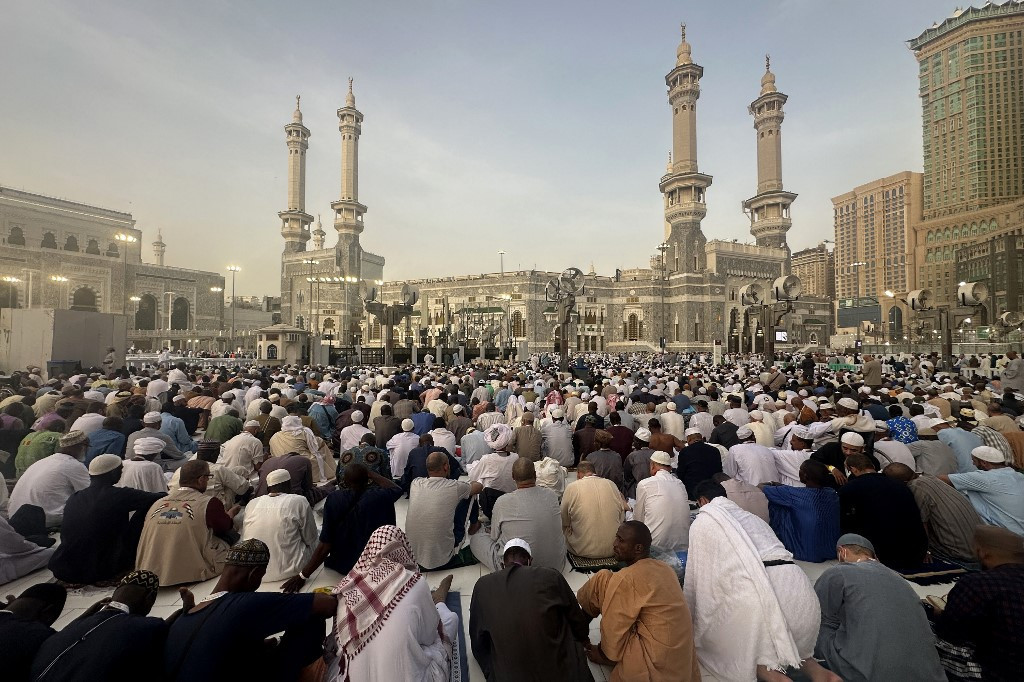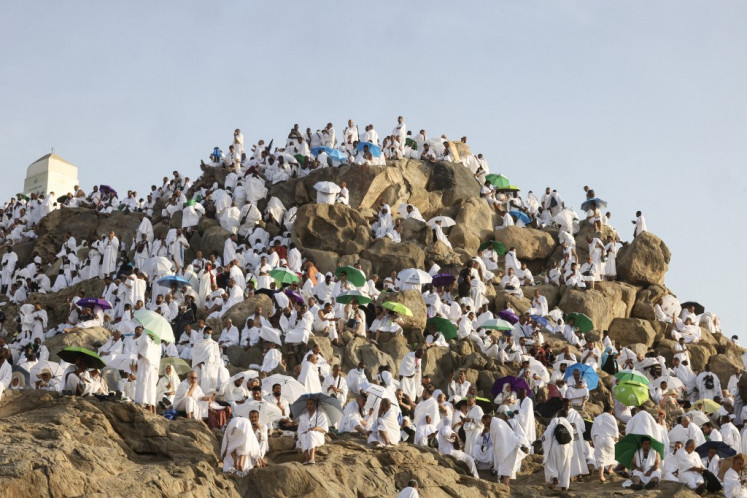Million-plus pilgrims to begin haj under blazing sun
In temperatures that are expected to climb to more than 40 degrees Celsius (104 degrees Fahrenheit), robed pilgrims will slowly circle the Kaaba, Islam's holiest site -- the black cubic structure at the centre of Mecca's Grand Mosque.
Change text size
Gift Premium Articles
to Anyone
 Muslim worshippers gather for prayers at the Grand Mosque complex in the holy city of Mecca on June 2, 2025 ahead of the annual Haj pilgrimage. (AFP/AFP)
Muslim worshippers gather for prayers at the Grand Mosque complex in the holy city of Mecca on June 2, 2025 ahead of the annual Haj pilgrimage. (AFP/AFP)
M
ore than a million worshippers were set to join Islam's most important rite under a beating sun as the haj pilgrimage kicked off Wednesday, with authorities scrambling to avoid last year's 1,000-plus deaths in sweltering heat.
In temperatures that are expected to climb to more than 40 degrees Celsius (104 degrees Fahrenheit), robed pilgrims will slowly circle the Kaaba, Islam's holiest site -- the black cubic structure at the centre of Mecca's Grand Mosque.
About 1.4 million pilgrims arrived in Saudi Arabia ahead of the multi-day haj, one of the five pillars of Islam that must be performed at least once by all Muslims with the means.
Authorities have ratcheted up anti-heat measures such as extra shade to avoid a repeat of last year, when 1,301 people died as temperatures hit 51.8C (125.2F).
On Wednesday, pilgrims will perform the tawaf -- walking seven times around the Kaaba, which Muslims worldwide pray towards each day.
They then head to Mina, the site of a giant tented city, before the hajj's high-point: prayers on Mount Arafat, where the Prophet Mohammed is believed to have delivered his final sermon.
Before entering Mecca, pilgrims must first enter a state of purity, called ihram, which requires special dress and behaviour.
Men don a seamless shroud-like white garment that emphasises unity among believers, regardless of their social status or nationality.
Women, in turn, wear loose dresses, also white, exposing just their faces and hands.
Pilgrims arriving on buses were already trickling into Mina on Tuesday afternoon, greeted by staff offering them coffee and dates.
"I am so happy, it's such an amazing feeling," said Reem al-Shogre, a 35-year-old Saudi national performing haj for the first time.
Artificial intelligence
Following last year's lethal heatwave, authorities have mobilised more than 40 government agencies and 250,000 officials, doubling their efforts against heat-related ailments.
Shaded areas have been enlarged by 50,000 square metres (12 acres), thousands of additional medics will be on standby and more than 400 cooling units will be deployed, Saudi Arabia's haj minister Tawfiq al-Rabiah told AFP last week.
Artificial intelligence technology will also help track the deluge of data and footage, including video from a new fleet of drones, to better manage the massive crowds.
Authorities said most of the deaths last year were among unregistered pilgrims who lacked access to air-conditioned tents and buses.
This year, they have stepped up a crackdown on unregistered worshippers, using frequent raids, drone surveillance and a barrage of text alerts.
Haj permits are allocated to countries on a quota basis and distributed to individuals by lottery.
But even for those who can obtain them, the steep costs prompt many to attempt the haj without a permit, even though they risk arrest and deportation if caught.
Large crowds at the haj have proved hazardous in the past, most notably in 2015 when a stampede during the "stoning the devil" ritual in Mina, near Mecca, killed up to 2,300 people in the deadliest hajj disaster.
Saudi Arabia, which is home to Islam's holiest sanctuaries in Mecca and Medina, earns billions of dollars each year from the haj, as well as the lesser pilgrimage known as umrah, undertaken at other times of the year.








